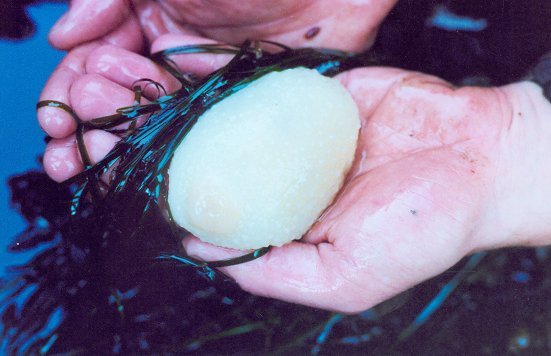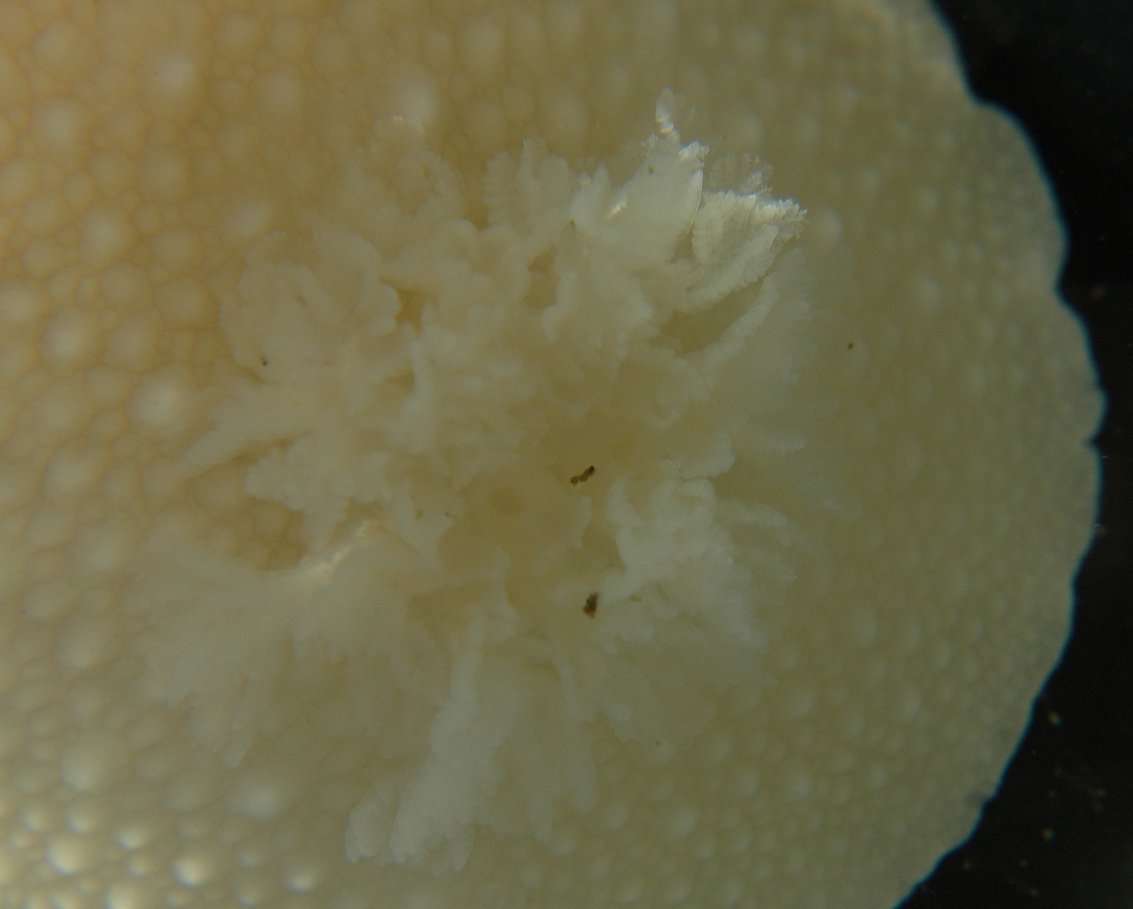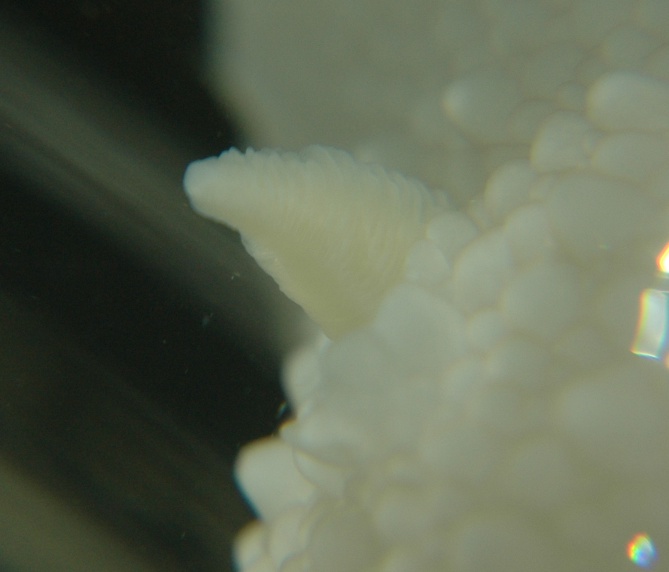Doris odhneri (MacFarland, 1966)White-knight Nudibranch, white knight dorid, snow white dorid, white night doris |
|
|
Synonyms:
|
 |
|
Phylum Mollusca
Subclass
Opisthobrachia
Class Gastropoda
Superfamily Eudoridoidea
Family Archidorididae
|
|
|
Doris odhneri found
at Cape Flattery,
WA
|
|
|
(Photo by: Robbie Wheeling,
July, 2002)
|
|
Description: Body usually 60 to 90mm long, but can be up to 200 mm. Usually pure white, sometimes is slight cadmium yellow. It has low tubercles. Rhinophores are large, retractile, have 25 leaves, and are conical (photo). Has seven gills (photo). Dorsum is arched
How to Distinguish from Similar Species: Doris montereyensis is more yellow and has dark spots on the dorsum. Aldisa tara is usually smaller than 3 cm long, has a flat rather than an arched dorsum, and has a ring of tubercles around the pits from which the rhinophores emerge.
Geographical Range: Kenai Peninsula, Alaska to San Diego, CA
Depth Range: Low intertidal, to subtidal 25 m.
Habitat: More common in subtidal rocky areas. Rare in low intertidal zones.
Biology/Natural History:
Feeds on
several sponges, among them Halichondria panicea
and representatives
of the genera Myxilla,
Mycale,
Stylissa,
Tedania, Craniella, and
Syringella.
Eaten by the rose star Crossaster
papposus. Eggs are deposited in areas of
high current.
Eggs are laid in large masses of thin, wide ribbons. Egg
ribbons
may be found year-round in Washington state. The ribbons form
oval
spirals with a fluted edge and are attached by one edge to the
substrate.
Each capsule in the ribbon usually contains 8 to 12 eggs.
Named after
biologist Nils Hjalmar Odhner.
Recent evidence (Chu
and Leys
2012) also shows that this nudibranch feeds on deep-living
glass
sponges such as Aphrocallistes
vastus and Heterochone
calyx, as well as the demosponge Desmacella austini
that encrusts them. These are all found in deep sponge reefs
(>200 m depth) off the west coast of Canada. This is
the first documented instance of animals feeding on glass sponges
outside of Antarctic waters.
| Return to: | |||
| Main Page | Alphabetic Index | Systematic Index | Glossary |
References:
Dichotomous Keys:
Harbo,
1999 (as Archidoris odhneri)
Lamb and Hanby, 2005
O'Clair and O'Clair (1998) (as Archidoris odhneri)
Morris et al., (1980) (as Archidoris odhneri)
Scientific Articles:
Chu, Jackson W.F. and Sally P. Leys, 2012. The dorid nudibranchs Peltodoris lentiginosa and Archidoris odhneri as predators of glass sponges. Invertebrate Biology 131:2 pp. 75-81
Notes:

Here is another photo of the species. Photo by Dave Cowles,
July
2005

The gills are white, and retractible. Photo by Dave Cowles,
July
2005

The rhinophores
are white and perfoliate.
Photo by Dave Cowles, July 2005
Authors and Editors of Page:
Robbie Wheeling (2002): Created original page
Edited by Hans Helmstetler 1-2003
Edited by Dave Cowles 1-2005